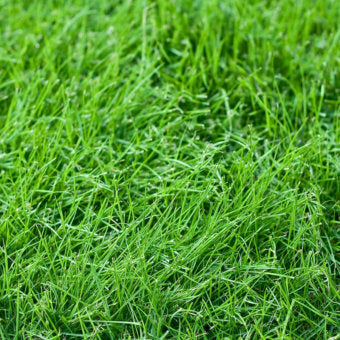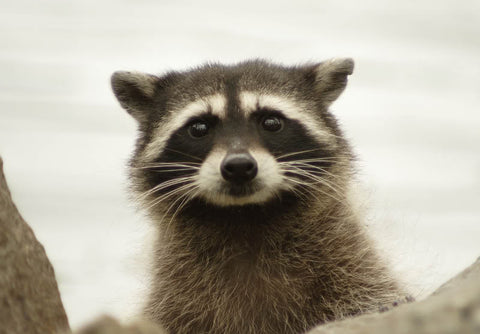Although they arrived from Europe, they’re well at home now in BC’s Lower Mainland and many other regions. This lively beetle (Amphimallon majalis) has an annual life cycle that is worth understanding in an attempt to control it. The beetle spends its childhood and teen years as a grub in the soil, feeding on the roots of grasses, particularly in lawn areas. As an adult, it emerges, mates, and then lays the eggs for a new generation.
In the larval stage, the chafer can cause some damage to lawns resulting in brown patches. But because they are so substantial, they make an ideal source of protein for birds and mammals. The grubs are at their largest (and most appetizing) exactly when local wildlife is preparing for spring nesting and breeding. It’s the crows, skunks, and raccoons that cause most of the damage to lawns as they search out these succulent morsels.
The Chafer Life Cycle
In the spring, from April to late June, the adult beetles emerge from the ground and gather near the tops of deciduous trees to mate. Soon after, the females descend and deposit as many as fifty eggs each in the soil.
The eggs hatch in July and the larvae begin feeding on the roots of turf grass. If they’re present in dense numbers, this can result in the ground having a spongy feel as the grubs tunnel beneath it. Brown patches of lawn can result from infestations.
The grubs continue to grow as they feed from October to March. During this whole length of time, damage may be caused by foraging birds and mammals, but it intensifies as the larvae grow. In the Vancouver region, the damage is most intense as March approaches. The grubs typically linger within 5cm (2″) of the soil surface, but they will burrow deeper in cold weather. In May, the grubs pupate in preparation for emergence as new spring adults.
Organic Solutions for the European Chafer
The first option is to cultivate a really healthy lawn that will naturally recover from the presence of the grubs. This is labour-intensive, and involves routine aerating, dethatching, fertilizing, and deep watering of grassy areas.
A second option is to apply predatory nematodes in the third week in July, just when they might parasitize the eggs and early larval stage of the chafers. While nematodes are a good solution for many soil dwelling beetle species, timing is critical in the control of chafer beetles. The application of nematodes involves soaking the treated area before and after so they can get down into the soil. You may need to apply for a water exemption permit, depending on water restrictions in your area. Simply call your city hall to find out more.
We prefer the third option, which is to simply replace lawn grasses, or to incorporate other plants that will provide the same green space, but not provide forage for chafers. By integrating multiple species, you transform a monoculture (turf grass) into an area with greater biodiversity. Whenever this can be accomplished, it provides forage and shelter for a larger number of organisms, which seems like a step in the right direction.
Here are some of our favourite seeding options:

Micro-Clover — This works best if the lawn is removed and newly seeded at a rate of 50g per 100 square feet. It still requires mowing, but it grows in densely and smothers most weeds. If mowed regularly, the leaf size becomes tiny, hence “micro” clover. It does not form thatch, and will not attract chafer beetles.

Tall Fescue, Turf Type — It’s fescue to the rescue! Fescue has deeper roots than conventional lawn grasses, and it’s a an incredibly sturdy plant. It will stand up to traffic, drought, cold, shade, pets, mowing, and chafer beetles.

Chafer Beetle Resistant Lawn Blend — Here’s a pre-mixed blend of micro-clover and tall fescue. It works best as a new planting, rather than inter-seeding with existing lawn. The clover fixes nitrogen, which acts as a natural fertilizer for the fescue resulting in greener, lusher growth.

Easy Care Envirolawn — This blend of slow growing grasses and drought tolerant flowers stays low and tidy. It contains hard fescue, ryegrass, clover, English daisies, white yarrow, and Baby Blue Eyes. Any of these can be planted on their own, of course, or integrated into existing lawns. When you mow this ground cover, the yarrow smells fantastic. This is the best choice for filling in an area quickly, as in covering a septic berm.

Alternative Lawn Wildflower Blend — How about getting rid of lawn altogether? This blend of thirteen low-growing, flowering plants is like a rich carpet of colour, and it self-sows to come back for year after year. It can be mixed with any of the above, but be aware that it won’t perform well under regular mowing. It will attract and feed key pollinators all summer long.
Whatever strategy you choose, the European chafer is here to stay. City bylaws prohibit the use of pesticides as a solution, so these organic solutions make good sense.

“Don’t blame me — they’re delicious!”

Download our free 2-page Chafer Beetle pdf.

